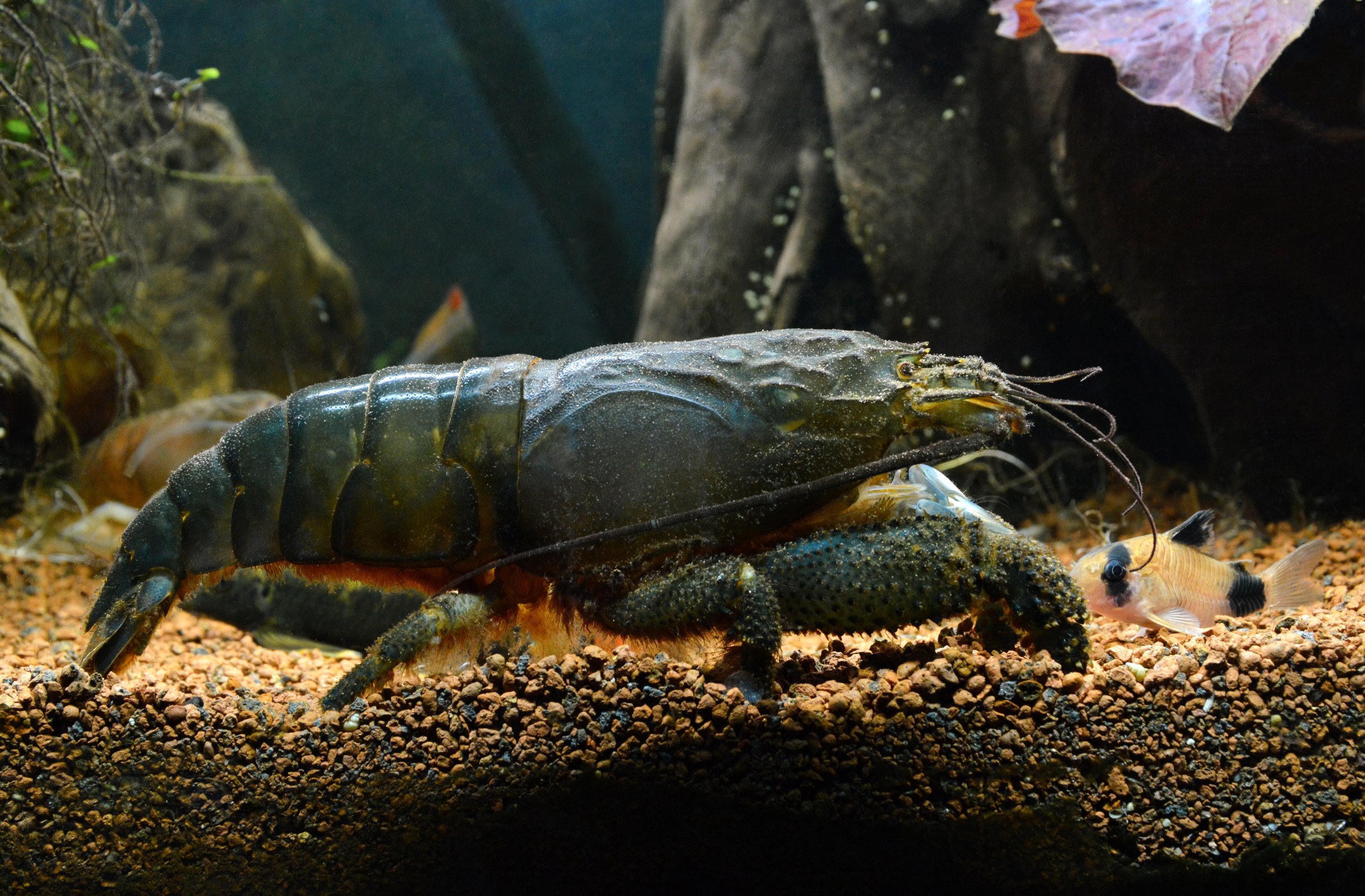Vampire Shrimp: Care Guide
Vampire shrimp are generally solitary and tend to keep to themselves, but they are tolerant of tank mates, including other vampire shrimp, although interactions are minimal. Maintaining proper water flow is crucial for their well-being. We use BacterAE daily to ensure the shrimp get all the nutrients they need.
For filtration and flow, we use a hang-on-back filter alongside a large air stone, solely for generating current. Additionally, you can add a water pump placed on the opposite side of the tank to create multiple areas with strong currents, providing an ideal environment for them to thrive.
Origins of Vampire Shrimp
Despite their fearsome name, vampire shrimp are harmless filter feeders, using their long antennae to detect and capture prey in the water column. Hailing from the lush waters of Southeast Asia, vampire shrimp, also known as the Vampire or Viper shrimp, make their home in the slow-moving rivers and streams of Thailand and Indonesia. These fascinating crustaceans thrive in the rich, nutrient-dense waters of their natural habitat, where they play a vital role in maintaining ecological balance.
Biology and Appearance
Measuring up to 3-4 inches in length, vampire shrimp boast a striking appearance that's sure to captivate any onlooker. Vampire shrimp possess specialized filtering appendages known as maxillipeds, which they use to sift through the substrate and capture microscopic food particles. In the wild, vampire shrimp form symbiotic relationships with certain fish species, hitching a ride on their backs to access new feeding grounds and evade predators.
Distinguishing Males from Females
Differentiating between male and female vampire shrimp can be quite a challenge, as they exhibit minimal sexual dimorphism. However, keen observers may notice subtle differences in size and shape, with females typically being slightly larger and broader than their male counterparts.
Breeding
While breeding vampire shrimp in captivity can be a rewarding endeavor, it requires careful attention to water parameters and environmental conditions. To encourage breeding behavior, ensure that your aquarium mimics the natural habitat of these creatures, with soft, slightly acidic water and ample hiding places.
Tank Size and Water Parameters
When it comes to providing a comfortable habitat for vampire shrimp, bigger is often better. Aim for a tank size of at least 20 gallons to accommodate their active nature and ample space for exploration. Maintain stable water parameters with temperatures ranging from 72-78°F, pH levels between 6.5-7.5, and moderate water flow.
Social Dynamics and Tankmates
While vampire shrimp are generally peaceful creatures, they may exhibit territorial behavior towards their own kind. It's best to keep them in small groups of 2-3 individuals to minimize aggression. When selecting tankmates, opt for peaceful species such as small fish, snails, and shrimp that won't compete for resources or harass the vampire shrimp. In our vampire shrimp tank, we have platies, neocaridina shrimp, nerite snails, and a blue dwarf gourami.
Dietary Delights
Feeding vampire shrimp can be tricky. As mentioned earlier, we feed our vampire shrimp BacterAE so they can filter feed safely. Along with the BacterAE. we feed the tank sinking pellets and frozen brine shrimp. A telltale sign that your vampire shrimp is starving is if you see it digging in the substrate to find food. Digging in the substrate can be damaging to their maxillipeds which can render them unable to catch food and starve to death.
Aquascape Aesthetics
Create a captivating aquatic landscape for your vampire shrimp by incorporating natural décor elements such as driftwood, rocks, and live plants. Vampire shrimp are nocturnal eaters so they will need multiple dark places they can hang out in during the day. Not only do these additions provide shelter and hiding places, but they also contribute to water quality and overall aesthetic appeal.
Compatible Aquarium Plants
When selecting plants for your vampire shrimp habitat, opt for species that can thrive in low to moderate lighting conditions and won't be consumed by hungry shrimp. Some popular choices include Java fern, Anubias, Java moss, and Cryptocoryne species.
In conclusion, vampire shrimp are a captivating addition to any aquarium enthusiast's collection, offering a unique blend of beauty, intrigue, and ecological significance. By providing proper care and attention to their needs, you can unlock the full potential of these mesmerizing creatures and embark on a journey of discovery unlike any other. Dive in and let the magic of vampire shrimp enchant you!

